/Etat du Milieu/Espèces
Type of resources
Available actions
Topics
INSPIRE themes
Keywords
Contact for the resource
Provided by
Years
Formats
Representation types
Update frequencies
status
Scale
Resolution
-
In the Mediterranean deep-sea two scleractinian species, Lophelia pertusa (= Desmophyllum pertusum) and Madrepora oculata, make up the dominant structure-forming corals. The Lacaze-Duthiers canyon is the only French Mediterranean canyon where the two species L. pertusa and M. oculata have been observed living together in large quantities, the situation generally described for the biocoenosis of cold-water corals (CWC). In this canyon large colonies (more than 40 cm) of both species of scleractinians were observed at depths ranging from 246 m to 541 m at the head of the canyon and its western flank. The second canyon is the Cassidaigne canyon, where M. oculata seems to be the only structure-forming scleractinian there. The largest concentration of M. oculata colonies was observed on the west flank of the canyon along a crest at depths ranging from 200 to 210 m. Mature M. oculata colonies attained heights up to 40 cm. M. oculata were observed in three other canyons: Bourcart, Sicié and Var. In the Bourcart canyon, M. oculata was observed on a shelf of hard substratum at 331 m depth. Several single branches protruded from a slab. In the Sicié canyon a 15-cm colony of M. oculata was observed at 255 m depth, while in the Var canyon, three young branches 2 cm long were seen growing at 350 m depth on a wall of hard rock. Data linked to the publication Fabri et al, 2014. https://doi.org/10.1016/j.dsr2.2013.06.016.
-
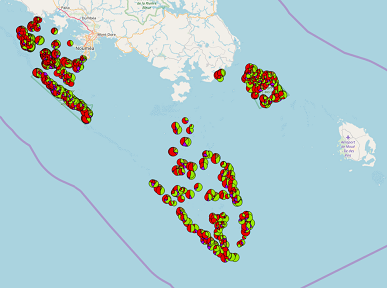
Composition de la richesse spécifique totale de chaque station observée par vidéo rotative STAVIRO par groupes trophiques (nombre d’espèces par station observé dans un rayon de 10m autour du système STAVIRO).
-
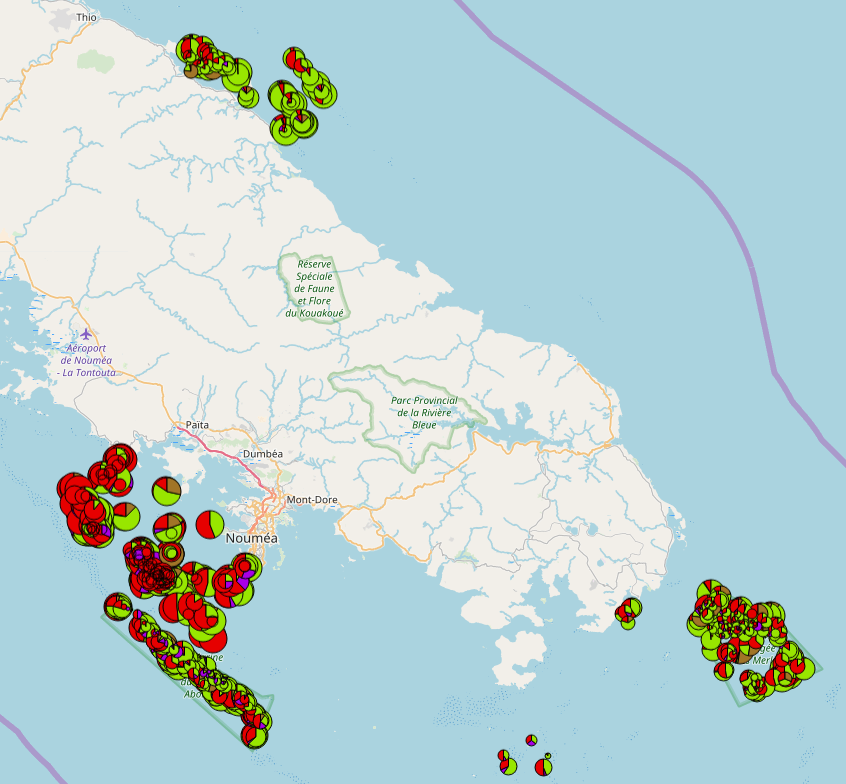
Composition de la densité totale de chaque station observée par vidéo rotative STAVIRO par groupe trophique (nombre d’individus dans un rayon de 5m autour du système STAVIRO, rapporté à une surface de 100 m²).
-
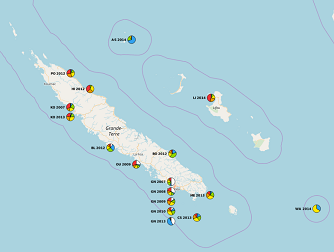
Composition du niveau de l'état écologique à l'échelle de la Nouvelle-Calédonie de chaque campagne d'échantillonnage observée par vidéo rotative STAVIRO en fonction des métriques écologiques (nombre de stations classées par niveau d'état de la Cotation STAVIRO par campagne).
-
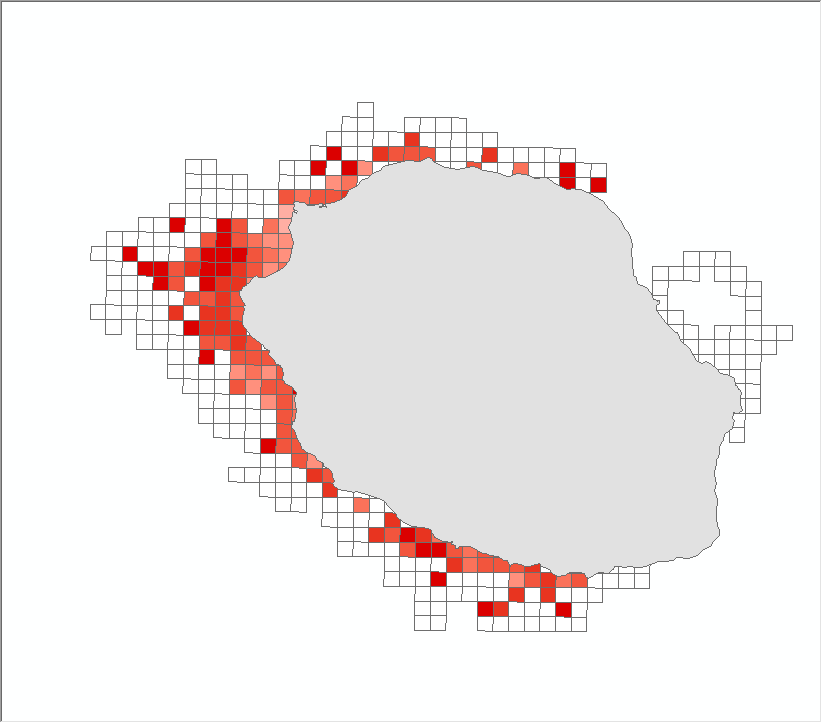
Cette carte représente les fréquence d'observations de la Baleine à bosse (Megaptera novaeangliae) autour de La Réunion (Océan Indien). Cette étude a été réalisée par Globice. Pour une plus grande homogénéité, les données fournies sont issues de la période de prospection 2008-2012. La grille se présente sous la forme d’un maillage de 2km sur 2km de coté.
-
Cartographie de l'abondance relative des différentes espèces de cétacés autour de l'île de La Réunion par année selon une grille de maille 2kmx2km.
-
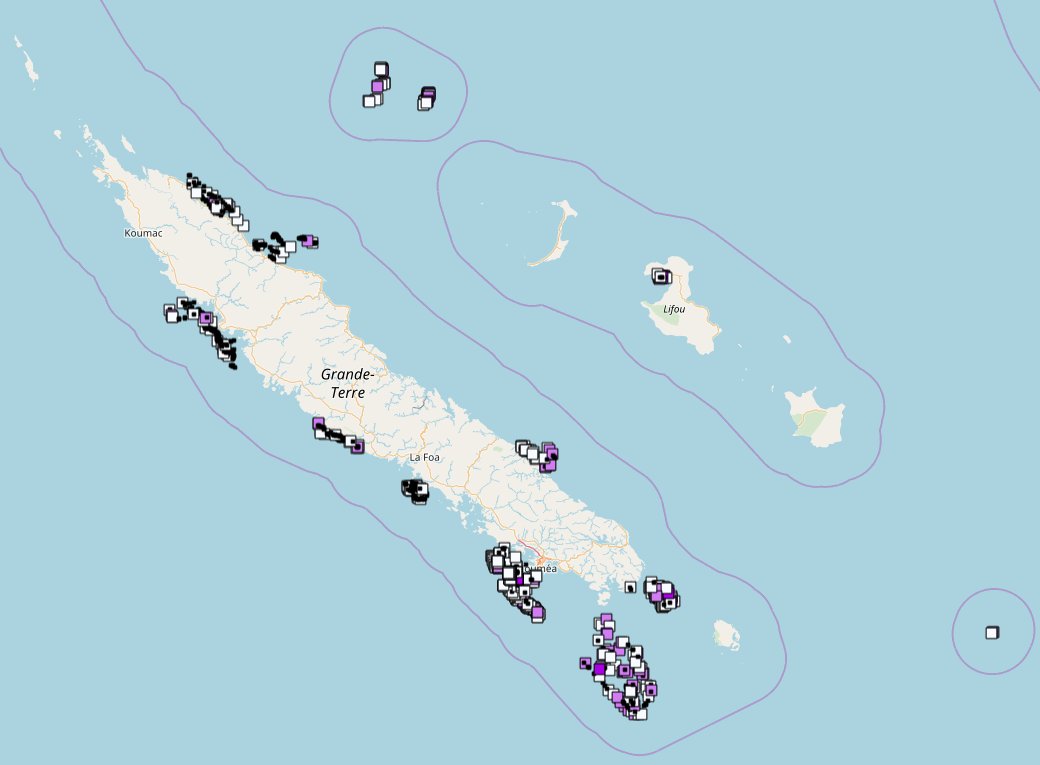
Richesse spécifique par famille taxonomique de chaque station observée par vidéo rotative STAVIRO (nombre d’espèces observées dans un rayon de 10m autour du système STAVIRO).
-
Cartographie des positions des observations des différentes espèces de cétacés autour de l'île de La Réunion par année.
-
Cartographie de l'effort de prospection autour de l'île de La Réunion par année selon une grille de maille 2kmx2km.
-
Cartographie de l'effort de prospection linéaire autour de l'île de La Réunion par année
 Mon GéoSource
Mon GéoSource